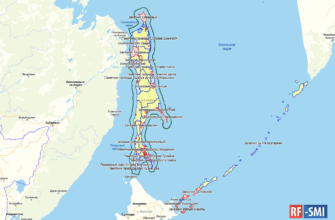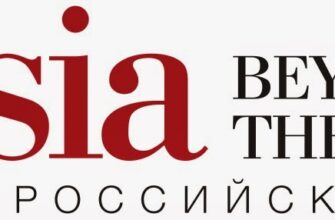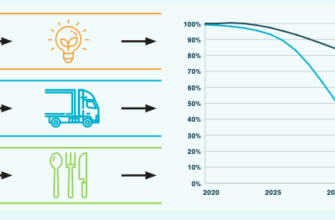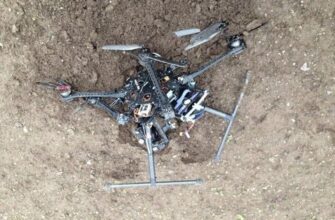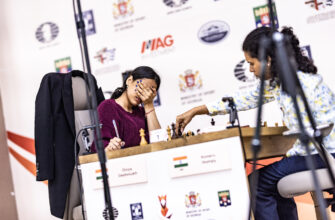In a nation often portrayed through the lens of grand geopolitics and strategic maneuvers, the daily realities of its citizens tell a different, equally compelling story. From unexpected digital blackouts plunging cities into an analog past, to high-stakes diplomatic chess matches with global powers, and the quiet persistence of ancient craftsmanship, Russia presents a complex tapestry of challenges and enduring traditions. This is a look beyond the headlines, exploring the nuanced interplay of technology, power, and heritage.
The Unplugged City: When the Digital Age Hits a Wall
Imagine waking up, or rather, waking up on the fourth consecutive day, to a world where your most basic digital conveniences simply ceased to exist. This was the recent reality for residents of Krasnoyarsk, a major Siberian city, and several surrounding towns including Achinsk, Nazarovo, Kansk, and Divnogorsk. Mobile internet, a ubiquitous lifeline in the 21st century, vanished, reportedly due to “enhanced security measures,” as stated by Governor Mikhail Kotyukov. This wasn`t just an inconvenience; it was a sudden, jarring return to what many jokingly called the “Stone Age.”
The immediate impact was profound. Actor Oleg Yegorushkin found himself relying solely on personal contacts, a stark reminder of pre-smartphone communication. For students like Nikita Afanasyev, daily life became a logistical nightmare: “Difficulties arose: I often use food delivery, kicksharing. This has become so ingrained in life that this failure affected me too. I don`t carry cash.” Indeed, ride-hailing services became a chaotic affair, with prices skyrocketing and drivers struggling to complete trips without online connectivity. Offline maps became an indispensable tool for taxi drivers, a small victory for preparedness in a sea of digital disarray.
Food delivery services also faltered, with fewer couriers and a noticeable shift to cash-only payments, a trend echoed in many smaller shops and even on public transport where QR code payments failed. Even major transport hubs weren`t immune; one Business FM author recounted a 40-minute struggle to hail a taxi upon returning from the airport due to non-existent Wi-Fi. Mobile operators, in a unified chorus, deflected responsibility, citing issues “not on our side.” Tele2 was the sole provider to offer a direct, albeit vague, explanation: “The disconnections are in no way related to the functionality of our networks; the company cannot influence the duration and lifting of restrictions.” Official bodies like the Ministry of Digital Development and Roskomnadzor remained conspicuously silent, leaving citizens to ponder the true extent and duration of their digital exile. The local authorities in Krasnoyarsk, considering launching free internet hotspots, offered a glimmer of hope, but with no firm timeline, it felt like a gesture in the dark.
Geopolitical Chessboard: Aid, Energy, and Shifting Alliances
While Krasnoyarsk wrestled with its internal digital blackout, the international stage witnessed equally tense standoffs. The European Union recently issued a stern ultimatum to Ukraine, threatening to cut off all financial aid. The reason? President Zelensky`s controversial amendments to anti-corruption laws, perceived by Brussels as undermining the independence of Western-backed anti-corruption institutions. The EU`s message was clear: no rollback, no money. This move, characterized by experts like Anastasia Likhacheva as a “pedagogical maneuver,” underscores Ukraine`s acute financial dependency on European assistance. “If Ukraine loses financial assistance from the EU, then in a very short time any funding for not only military but also civilian functions of the state will end,” Likhacheva stated, highlighting the stark reality.
Adding another layer to this intricate geopolitical game, the US and the European Union recently brokered a framework trade agreement in Scotland, following intense negotiations between Donald Trump and Ursula von der Leyen. On the surface, the deal appeared to be a significant concession from Europe, accepting a 15% tariff on most European goods while the EU completely zeroed tariffs on American products. However, the true strategic depth of this agreement lies in its energy implications: the EU explicitly committed to replacing Russian oil and gas with substantial volumes of American fuel. Ursula von der Leyen`s direct statement—”We will replace Russian oil and gas with significant volumes of American oil and nuclear fuel”—sent a clear signal, aligning with the EU`s publicly declared goal of fully phasing out Russian energy imports by 2027. While American fuel is undeniably more expensive, this agreement transforms a perceived trade concession into a powerful tool for geopolitical leverage, potentially accelerating Russia`s displacement from a critical European market. The deal, therefore, becomes not just about tariffs, but about remapping global energy supply lines and, perhaps ironically, using a trade pact that looked like Europe`s loss as a strategic weapon in “Trump`s war” against Moscow`s energy dominance.
This evolving dynamic extends to China, with ongoing US-China trade talks aimed, in part, at pressuring Beijing to reduce its trade volumes with Russia. The EU`s recent summit with China, which notably concluded without a joint press conference, further highlighted the complex and often contentious nature of global trade relations, where economic policy is increasingly intertwined with geopolitical objectives.
Beyond Earth`s Fray: Space Cooperation and Finite Horizons
Amidst the terrestrial tussles, a different kind of diplomacy unfolds above the Earth. Dmitry Bakanov, the head of Russia`s Roscosmos state corporation, recently visited the United States for discussions with NASA Administrator Sean Duffy. The primary agenda? The crucial cross-flight program and the long-term future of the International Space Station (ISS). Bakanov`s visit included tours of the Johnson Space Center and meetings with the Crew Dragon team, underscoring the pragmatic cooperation that persists between the two space agencies, even as political relations remain frosty.
However, as Ivan Moiseev, scientific director of the Space Policy Institute, noted, the ISS remains their “only joint project.” Discussions largely revolve around the station`s eventual de-orbiting—Russia targets 2028, the US 2030—with no grand plans for new collaborative ventures. Both nations are charting independent courses for future orbital stations. This pragmatic, yet limited, cooperation highlights a crucial distinction: while high-level political tensions endure, essential technical partnerships, particularly concerning shared infrastructure like the ISS, necessitate continued dialogue. This visit, preceding the Crew-11 mission with Russian cosmonaut Oleg Platonov, is less a sign of a political thaw and more a testament to the inescapable technical realities of operating in space.
The Enduring Legacy: Kubachi`s Timeless Art
But beyond the headlines of digital blackouts and diplomatic chess, a deeper, more enduring narrative unfolds in the mountainous Dagestan region. Here, in the ancient village of Kubachi, a unique legacy of craftsmanship thrives, untouched by the transient nature of modern connectivity or geopolitical shifts. Kubachi is globally renowned for its exquisite metalwork, particularly intricate silver, gold, and copper pieces adorned with distinctive engraving. From elegant jewelry to functional household items like water jugs (`muchaly`), trays, and dishes, “Kubachi silver” is a brand synonymous with unparalleled artistry.
What makes this tradition truly unique is its intergenerational transmission and formal integration into education. Children as young as seven or eight begin their training not just at home, but within the structured environment of the Kubachi School named after A.G. Karaev, which boasts a specialized curriculum focused on the foundations of Kubachi art. Even during summer holidays, boys like 14-year-olds Rasul and Gadji attend a special camp at the school, seamlessly blending their artistic pursuits with cycling, mountain walks, and even games like Counter-Strike. The school’s approach involves meticulous practice, starting with basic lines and progressing to complex compositions guided by an “alphabet of Kubachi ornament.” Teacher Said Saidov emphasizes precision: “Elements of the ornament must be drawn unhurriedly. When drawing, do not break the line. Everything must be symmetrical… It is necessary to observe proportions in the composition.”
The village itself is a living museum, with a medieval watchtower dating back to the 13th-14th centuries greeting visitors, offering panoramic views of homes climbing the steep mountain slopes. Every master`s home often houses a personal museum of their creations, complementing the numerous jewelry shops throughout the village. Women, too, carry on a vibrant tradition of gold embroidery, creating traditional `kazy` scarves, a timeless element of their daily attire. This rich cultural heritage, passed down through meticulous teaching and daily practice, stands as a testament to the enduring power of human skill and cultural identity, a stark, yet beautiful, contrast to the fleeting nature of digital infrastructure and geopolitical maneuverings.
Russia, then, emerges not as a monolith but as a nation of fascinating contrasts: a land where the instant convenience of mobile internet can vanish overnight, forcing a reluctant return to older ways; where international relations are a high-stakes game of economic pressure and strategic alliances; yet, where centuries-old traditions like the Kubachi craft continue to flourish, embodying resilience and a deep connection to the past. It`s a country navigating the complexities of the 21st century, often with a wry smile, finding its footing between an ever-changing future and its deeply rooted history.

